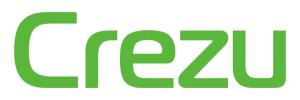Online Loan in South Africa
Accessing online loans in South Africa has become remarkably simple, allowing individuals to secure funds with just a few clicks. Whether you’re in need of a short-term solution or a more substantial financial boost, numerous platforms are available to meet diverse needs swiftly. The process is often hassle-free, requiring minimal documentation and offering flexible terms tailored to your situation. With a plethora of options, finding an online loan that fits your needs has never been easier.
| Company | Loan amount | Term of Loan | Apply | |
|---|---|---|---|---|
 | R 500 - R 4000 | 61 days | Apply for a loan | |
 | R 500 – R 4000 | 61 days | Apply for a loan | |
 | R 500 – R 350000 | up to 4 months | Apply for a loan | |
| The loans offered have minimum repayment terms of 61 days (2 months) and maximum repayment terms of 120 days (4 months). Lending rates vary from lender to lender in the range from 12% to a maximum APR of 36%. For example, for a loan of R10 000 that will be paid in 3 months, the total payment of the loan will be R15 000. | ||||
 | R 500 – R 350000 | up to 12 months | Apply for a loan | |
 | R 500 – R 350000 | up to 12 months | Apply for a loan | |
| Example: Loan of 4000 R for 3 months, commission 808.48 R, total amount 4808.48 R, annual percentage rate APR 74.9%. The maximum APR possible is 74.9%. | ||||
 | R 500 – R 8000 | up to 6 months | Apply for a loan | |
 | R 500 – R 15000 | up to 12 months | Apply for a loan | |
 | R 500 – R 350000 | up to 72 months | Apply for a loan | |
| Representative example: Estimated repayments of a loan of R30,000 over 36 months at a maximum interest rate of 27.5% apr would be R1,232.82 per month including fees. Repayment terms can range from 2 - 72 months. Creditum is an online loan comparison tool and not a lender. | ||||
Understanding online loans
Online loans in South Africa provide a quick and accessible way to secure funds without the need to visit a bank. These loans can range from small to large amounts, making them a flexible option for various financial needs. The process is usually straightforward, with applications typically completed online, saving time and effort. Moreover, online loans often come with the advantage of faster approval times, which is crucial when funds are needed urgently.
An online loan can offer convenience and speed, reducing the hassle of traditional bank visits.
The benefits of online loans extend beyond speed and ease. They also allow for better comparison of different lenders, helping consumers find suitable options that fit their needs. Accessibility is another key advantage, as borrowers can apply from virtually anywhere, provided they have an internet connection. This openness helps reach a wider audience, including those who might not have easy access to physical bank branches.
How online loan applications work
Online loan applications in South Africa provide a quick and convenient way to access funds. The process generally begins with selecting the loan provider. Once you’ve chosen a lender, you’ll need to fill out an online application form available on their website. You’ll be required to provide basic information such as your name, ID number, and income details.
After submitting the form, lenders typically use automated systems to assess your eligibility. This step involves verifying your credit score and financial status. If additional documentation is needed, such as proof of income, you might be asked to upload these documents directly to the lender’s site.
Upon successful verification and approval, the funds are often disbursed directly into your bank account. This entire process, from start to finish, can take only a few hours to a couple of days, making online loans a speedy option for urgent financial needs. Emphasizing the importance of accurate information in your application can significantly smooth the approval process.
Types of loans available
In South Africa, there are various loan options tailored to meet different financial needs. Understanding these options can help you choose the right one. Here’s a look at some common types:
- Personal Loans: Ideal for diverse needs, from home improvements to covering unexpected expenses. These are flexible and can be unsecured or secured, with varying interest rates.
- Payday Loans: Suited for short-term financial needs, typically due by your next payday. They have higher interest rates but offer quick cash access.
- Home Loans: Designed for purchasing property. These long-term loans can come with fixed or variable interest rates and usually require a mortgage as security.
- Vehicle Finance: Helps in buying a car or other vehicles. Often, the vehicle itself is used as collateral during the loan term.
- Student Loans: Assists in covering educational costs. These might be partly secured by a guarantor and are paid back over time after studies are completed.
Choosing the right loan type depends on your goals, repayment ability, and financial situation. Always consider the terms and potential interest rates before making a decision.
Short-term vs long-term loans
Choosing between short-term and long-term loans depends on your financial needs. Short-term loans are typically for smaller amounts with higher interest rates but are repaid quickly. Long-term loans offer larger sums and lower interest rates, with extended repayment terms. Each choice has its benefits, suitable for diverse financial situations. Below is a comparison table to help you decide:
| Feature | Short-term Loans | Long-term Loans |
|---|---|---|
| Loan Amount | Usually smaller | Typically larger |
| Interest Rates | Higher | Lower |
| Repayment Period | Short (weeks or months) | Long (years) |
| Flexibility | Less flexible | More flexible |
Advantages and potential pitfalls
Online loans offer a quick and easy way to access funds. You can apply from anywhere, saving time and avoiding long queues at the bank. There is also a variety of loan types available, catering to diverse needs from small short-term loans to larger long-term financing. However, potential pitfalls include high-interest rates and hidden fees, which could make repayments challenging if not carefully considered.
Be cautious: Read terms and conditions carefully before accepting any online loan offer to avoid unexpected costs.
Additionally, sharing personal information online carries risks. Ensure you are using a reputable service to protect your financial data.
Consumer tips for selecting a lender
Choosing the right lender for an online loan in South Africa can make a significant difference. Start by evaluating the lender’s credibility and reputation in the market. Check if they are registered with the National Credit Regulator (NCR) to ensure they meet legal requirements. It’s also wise to read reviews and testimonials from other borrowers to gauge their experiences.
- Consider the interest rates and fees the lender offers. A lower interest rate could save you money in the long term.
- Examine the loan terms. Make sure they are flexible enough to suit your financial situation.
- Look at customer service. A good lender should offer support throughout the loan process.
- Assess the application process. It should be simple and not overly burdensome.
Pay close attention to these aspects, and you’ll be better equipped to choose a lender who meets your needs while ensuring safety and transparency in your financial journey.
The future of online lending in SA
As technology evolves, the online lending landscape in South Africa is set for an exciting transformation. With the rise of fintech innovations, accessing loans will become even more streamlined and user-friendly. One trend that’s becoming clear is the shift towards mobile-first platforms. Most consumers are now using smartphones to manage their finances, making it crucial for lenders to offer seamless mobile experiences. This shift is not just about convenience; it also opens doors for financial inclusion, allowing more South Africans, especially those in remote areas, to secure funding.
Moreover, the use of artificial intelligence and data analytics is revolutionizing how loans are approved and disbursed. These technologies enable lenders to assess creditworthiness quickly and accurately, potentially reducing the time it takes to receive funds. As these systems become more sophisticated, they could help reduce risk and improve trust in online lending. The combination of these trends points to a future where obtaining an online loan in South Africa could become faster and more efficient than ever, catering to the evolving needs of the market. This transformation holds promise for both consumers and lenders, fostering a more robust and accessible financial environment.
